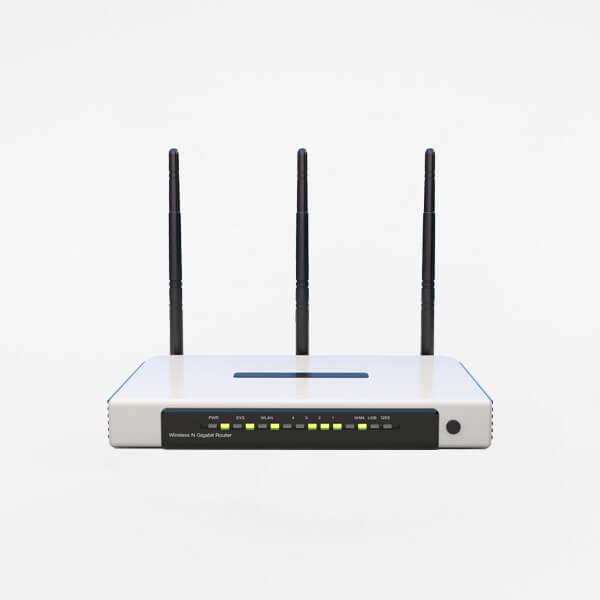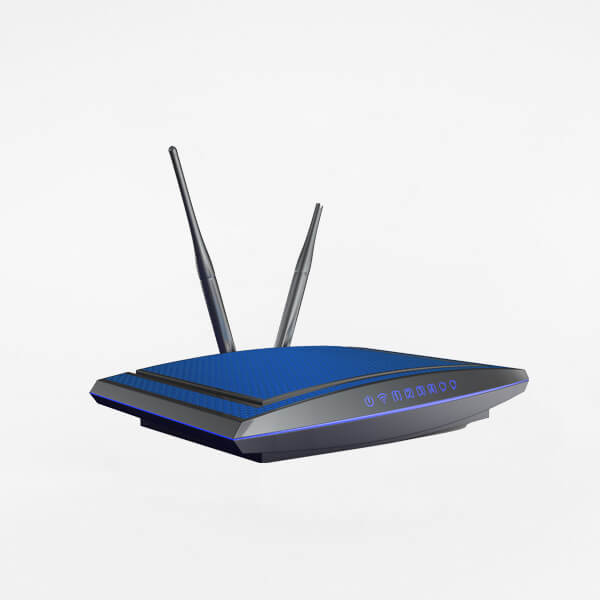Chassis
• Chassis Slots: 8
• Fixed Slots (for Control Modules): 2
• Open Slots (for Port Modules): 6
• Max. Switching Capacity: 1.152Tbps
• Max. Packet Forwarding Rate: 857.14Mpps
Maximum Port Density
• 10/100/1000Base-T Ports: 288
• 10/100/1000Base-T Ports with PoE: 288
• Gigabit SFP Slots: 288
• 10-Gigabit SFP+ Slots: 96
Software Features
L2 Features
• MAC Address Table
- 32K per I/O module
• Flow Control
- 802.3x Flow Control
- HOL Blocking Prevention
• Jumbo Frame up to 9,732 bytes
• IGMP Snooping
- IGMP v1/v2/v3 Snooping
- Support 2K groups
- IGMP Proxy2
- Host-based IGMP Snooping Fast Leave
• 802.3ad Link Aggregation
- Compliant with 802.1AX and 802.3ad
- Max. 128 groups per device, 8 ports per group
- Support cross-module trunk
• Port Mirroring
- Support 3 mirroring groups
- One-to-one, Many-to-one
- Tx/Rx/Both
- Flow-based and RSPAN
• RERP (Rapid Ether Ring Protection)
• MLD Snooping
- MLD v1/v2 Snooping
- Support 2K groups
- Host-based MLD snooping Fast Leave
• Loopback Detection
• L2 Protocol Tunneling
VLAN
• VLAN Group
- Max. 4K VLAN
• GVRP
- Max. 256 dynamic VLANs
• 802.1Q Tagged VLAN
• Port-based VLAN
• 802.1v Protocol VLAN
• Double VLAN (Q-in-Q)
- Port-based Q-in-Q
- Selective Q-in-Q
• VLAN Translation
• MAC-based VLAN
• Subnet-based VLAN
• VLAN Trunking
• Super VLAN
L3 Features
• Max. 4K IP Interfaces
• ARP Proxy
• VRRP
• IPv6 Tunneling
- Manual
- ISATAP
- 6to4
• IPv6 Neighbor Discovery (ND)
• IPv6 Phase 2 Ready
• Gratuitous ARP2
• Loopback interface
L3 Routing
• 12K hardware routing engines shared by IPv4/IPv6
• 8K hardware L3 forwarding entries shared by IPv4/IPv6
• 256 static routing entries for IPv4/IPv6
- Support for ECMP
- Support for WCMP2
• Policy-Based Routing
• RIP v1/v2/ng
• OSPF
- OSPF v2/v3
- OSPF Passive Interface
- Stub/NSSA Area
- OSPF Equal Cost Route
• BGP4
• BGP+2
L3 Multicasting
• 1K hardware multicast groups
• PIM-DM
• PIM-DM v62
• PIM-SM
• PIM-SM v62
• PIM Sparse-Dense Mode
• DVMRP v3
QoS
• IEEE 802.1p CoS
• 8 hardware Queues per Port
• Queue Handling
- Strict Priority
- Weighted Round Robin (WRR)
- Strict + WRR
- Strict + DRR
-WDRR
• Congestion Control
- RED
• CoS Based on:
- Switch Port
- VLAN ID
- 802.1p Priority Queues
- MAC Address
- IPv4/v6 Address
- DSCP
- Protocol Type
- IPv6 Traffic Class
- IPv6 Flow Label
- TCP/UDP Port
- User-defined Packet Content
• Support Following Actions for Flows
- Remark 802.1p Priority Tag
- Remark TOS/DSCP Tag
- Bandwidth Control
- Committed Information Rate(CIR), min. granularity 64 Kbps
• Bandwidth Control
- Port-based (Ingress/Egress, Min. Granularity 64Kbps)
• Time-based QoS
• Three Color Marker
- trTCM
- srTCM
ACL
• Ingress ACL
• Egress ACL
• ACL Based on
- 802.1p Priority
- VLAN ID
- MAC Address
- Ether Type
- LLC
- IPv4/v6 Address
- DSCP
- Protocol Type
- TCP/UDP Port Number
- IPv6 Traffic Class
- IPv6 Flow Label
Security
• SSH v2
• Port Security up to 16 MAC addresses per port
• Broadcast/Multicast/Unicast Storm Control
• IP-MAC-Port Binding
• DoS Attack Prevention
• ARP Spoofing Prevention
• D-Link Safeguard Engine
MPLS
• LDP
• VPWS (VLL)
• VPLS
• MPLS/BGP L3 VPN
AAA
• 802.1X
- Port-based Access Control
- MAC-based Access Control
- Dynamic VLAN Assignment
• RADIUS Authentication for Switch Access
• Guest VLAN
• Web-based Access Control (WAC):
- Port-based Access Control
- Host-based Access Control
- Dynamic VLAN Assignment
• MAC-based Access Control (MAC):
- Port-based Access Control
- Host-based Access Control
- Dynamic VLAN Assignment
• TACACS+
Management
• Web-based GUI
• Command Line Interface (CLI)
• Telnet Server(Support IPv4/v6)
• Telnet Client
• TFTP Client
• SNMP v1/v2c/v3
SNMP over IPv6
• SNMP Traps
• System Log
• RMON v1
Support 1,2,3,9 Groups
• Flash File System
• Multiple Images
• Multiple Configurations
• Debug command
• Up to 15 levels user account privilege
• Trusted Host
• Password Recovery
• Microsoft® NLB Support
• DHCP Client
• DHCP Relay
- Option 82
• DHCP Server
• SNTP
• Ping (Support IPv4/IPv6)
• Traceroute (Support IPv4/IPv6)
D-Link Green
• Power saving by Link Status
• Power saving by Time-based PoE
MIB/IETF Standard
• DLINK-MSTP MIB
• DLINK-TC MIB
• draft-ietf-idmr-dvmrp MIB-11, DVMRP-STD MIB
• IEEE Std 802.1X,IEEE8021-PAE MIB
• IEEE Std 802.3ad,IEEE8023-LAG MIB
• RFC791 IP MIB
• RFC792 ICMPv4 MIB
• RFC793 TCP MIB
• RFC826 ARP MIB
• RFC1212 Concise MIB Definitions
• RFC1213 MIBII
• RFC1215 MIB Traps Conversion
• RFC1338, RFC1519 CIDR MIB
• RFC1724 RIPv2 MIB
• RFC1886 DNS IPv6 MIB
• RFC1981 MTU Discovery IPv6 MIB
• RFC2460 IPv6 MIB
• RFC2461, RFC4861 ND IPv6 MIB
• RFC2462, RFC4862 IPv6 Auto-configuration
• RFC2463, RFC4443 ICMPv6 MIB
• RFC2464 IPv6 over Ethernet MIB
• RFC2474, RFC3168, RFC2571 SNMP Framework MIB
• RFC2572 SNMP Message Processing Dispatching MIB
• RFC2573 SNMP Applications MIB
• RFC2574 User-based Security Model for SNMPv3 MIB
• RFC3260 DS Field Definition MIB
• RFC2716, RFC3748 EAP MIB
• RFC2737 Entity MIB
• RFC2787 VRRP MIB
• RFC2819 RMON MIB
• RFC2863 IF MIB
• RFC2893, RFC4213 IPv4/v6 Dual Stack Function MIB
• RFC2934 PIM MIB for IPv4
• RFC3411 SNMP-FRAMEWORK MIB
• RFC3412 SNMP-MPD MIB
• RFC3413 SNMP-TARGET MIB
• RFC3413 SNMP-NOTIFICATION MIB
• RFC3414 SNMP-USER-BASED-SM MIB
• RFC3415 SNMP-VIEW-BASED-ACM MIB
• RFC3418 SNMPv2 MIB
• RFC3513, RFC4291 IPv6 Addressing Architecture MIB
• RFC3584 SNMP-COMMUNITY MIB
• RFC3635 EtherLike MIB
• RFC4133 ENTITY MIB
• RFC4188 BRIDGE MIB
• RFC4273 BGP4 MIB
• RFC4292 IP-FORWARD MIB
• RFC4293 IP MIB
• RFC4363 P-BRIDGE MIB
• RFC4363 Q-BRIDGE MIB
• RFC4560 DISMAN-PING MIB
• RFC4560 DISMAN-TRACEROUTE MIB
• RFC4750 OSPF MIB
• RFC5060 PIM-STD MIB
• RFC5132 IPMCAST MIB
• RFC5240 PIM-BSR MIB
• RFC5519 MGMD-STD MIB
Physical & Enviromental
Dimensions
445 x 500 x 470mm
Operating temperature
0 to 50°C
Storage temperature
-40 to 70°C
Operating humidity
10%-90% (non-condensing)
Storage humidity
5% ~ 90% (non-condensing)
EMI
FCC Class A, CE, C-Tick, VCCI, ICES-003
Security
cUL, CB
All the Lorem Ipsum generators on the Internet tend to repeat
predefined chunks as necessary, making this the first true generator on the Internet. It uses a
dictionary of over 200 Latin words, combined with a handful of model sentence structures, to
generate Lorem Ipsum which looks reasonable.


















Add Your Comments